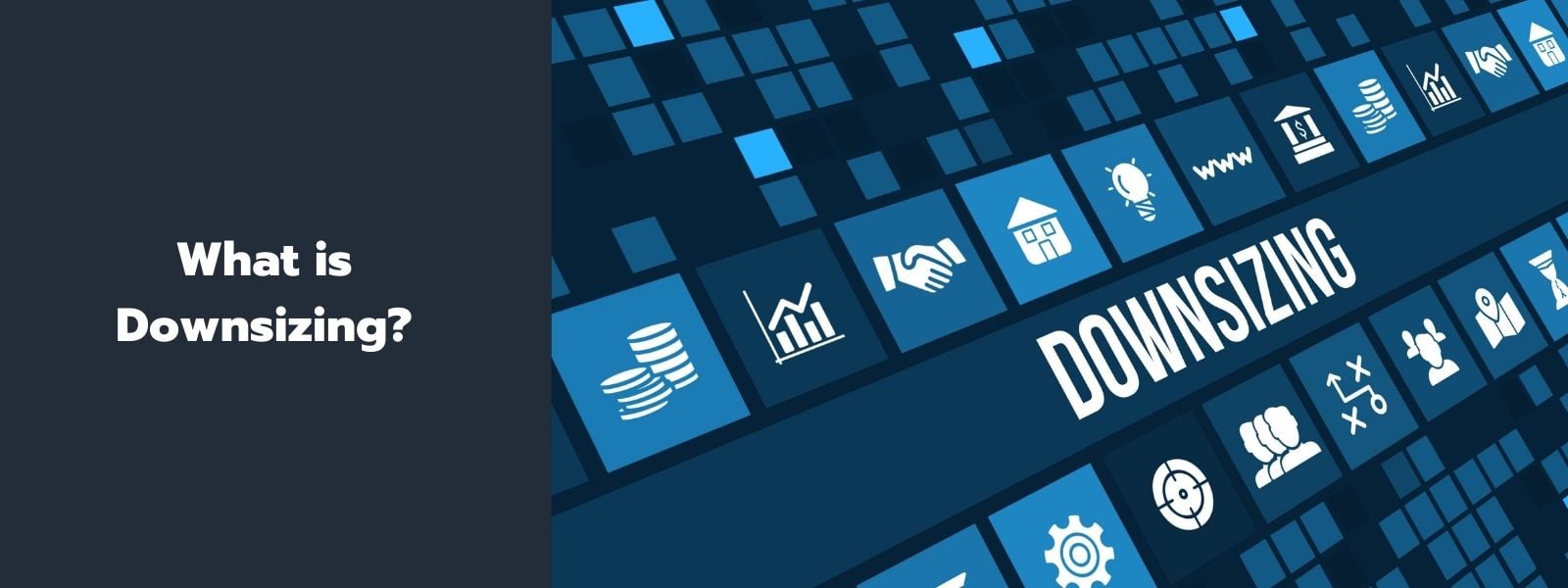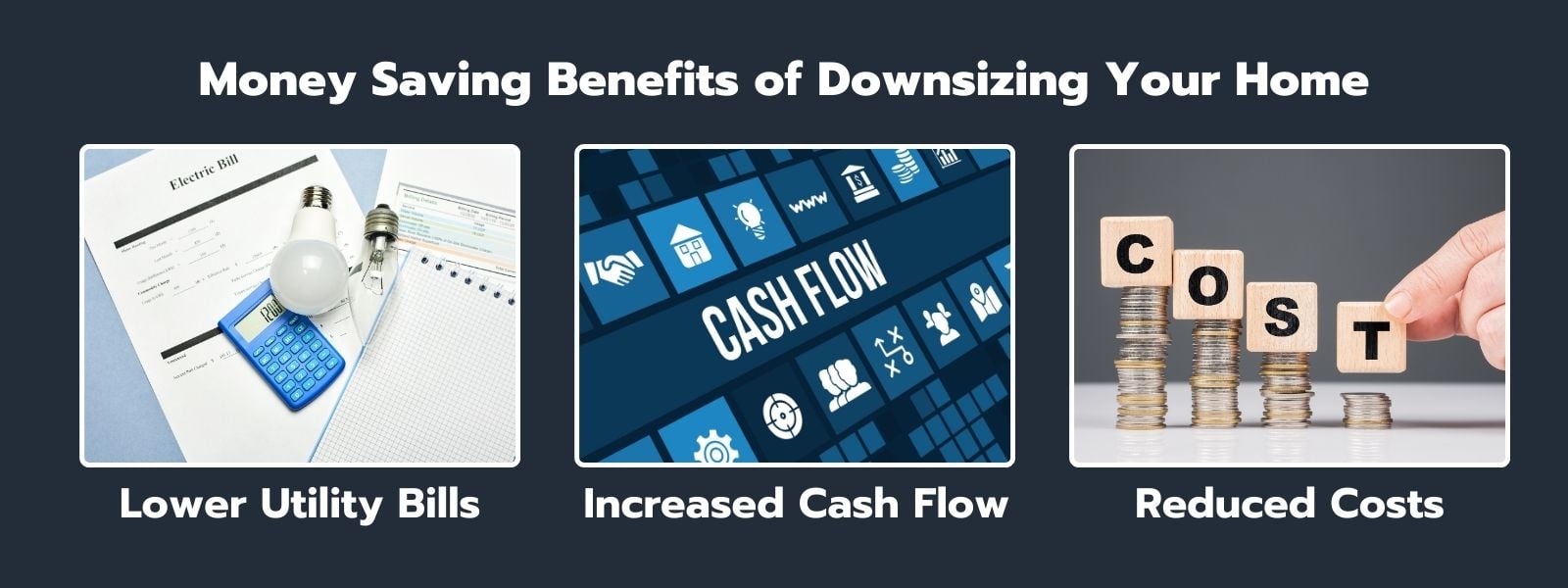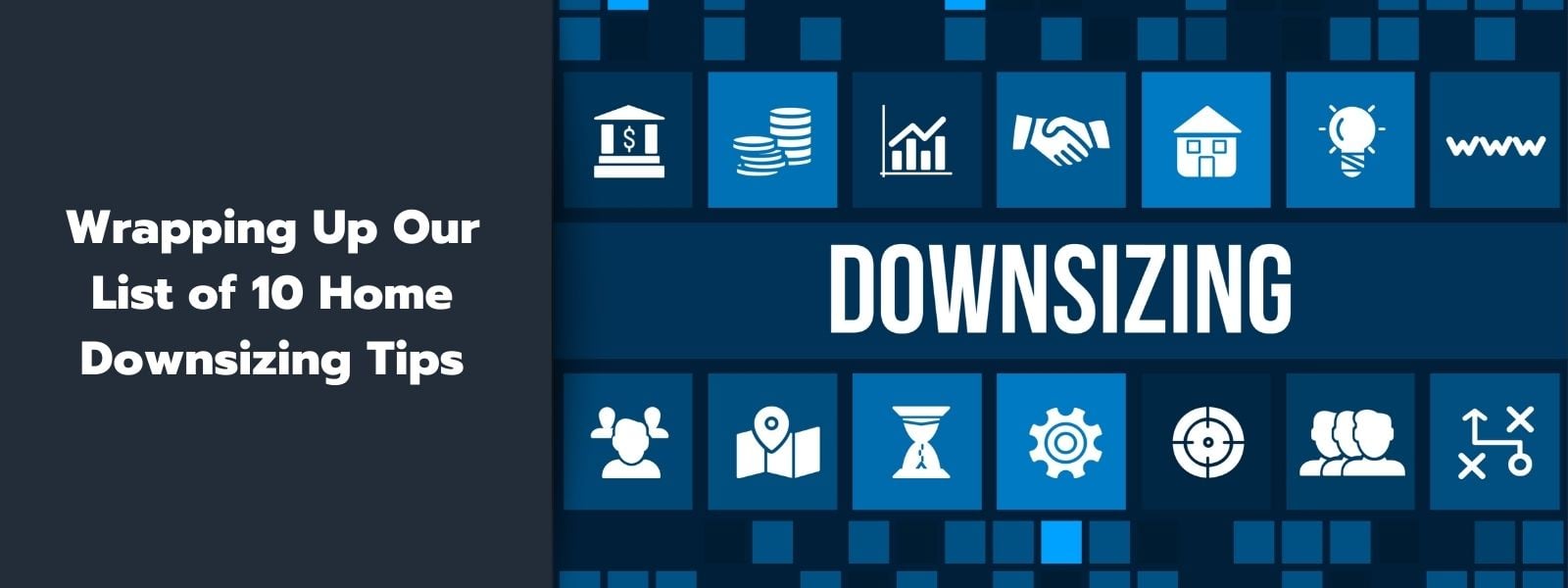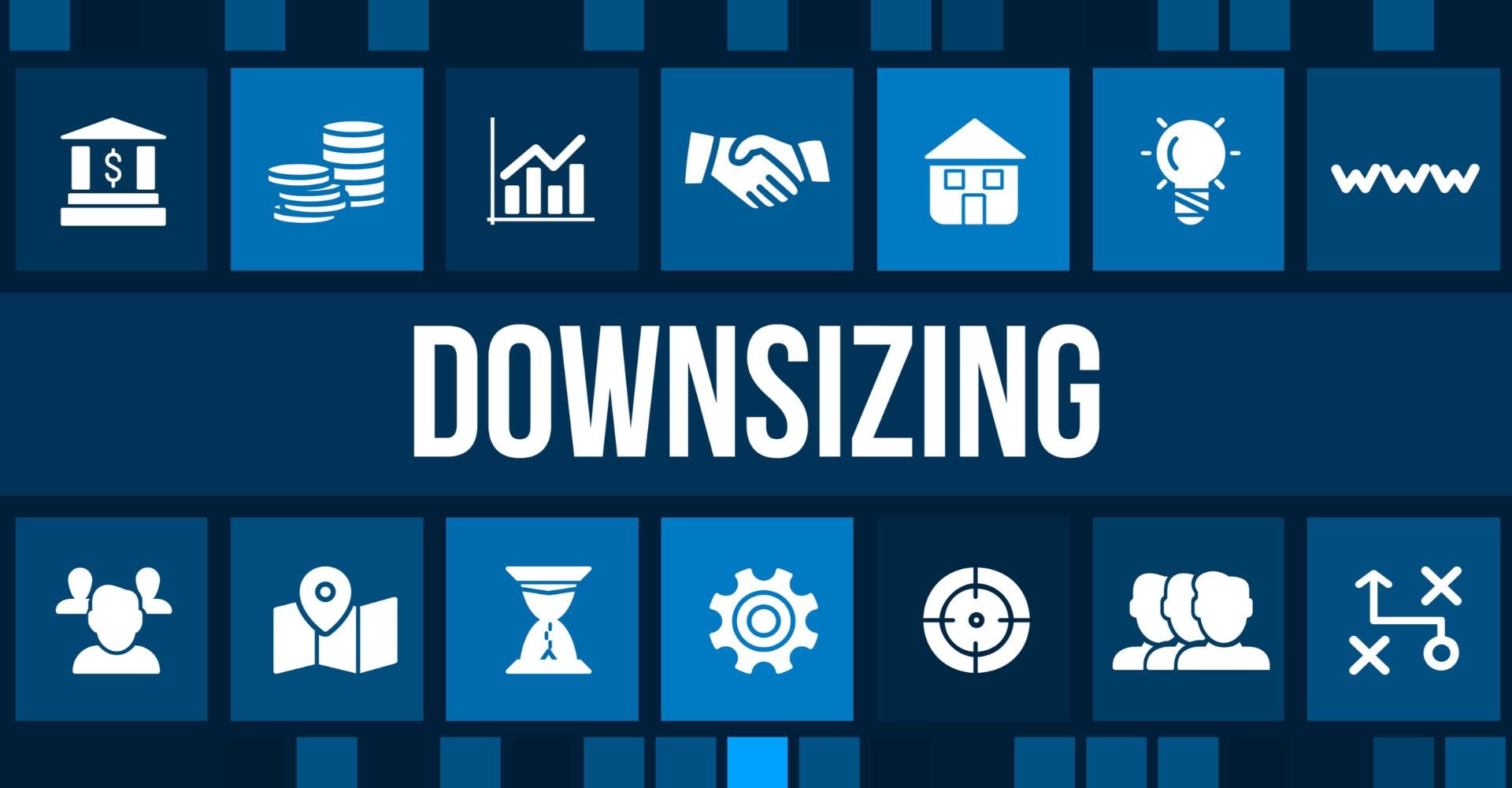As the saying goes, “Everything is bigger in Texas,” but when it comes to homeownership, bigger isn’t always better.
In the Lone Star State, where sprawling ranches and spacious abodes are part of the cultural landscape, the idea of downsizing might seem counterintuitive at first glance.
However, amidst the vast expanses and grandeur, many Texans are discovering the allure of living smaller and more efficiently.
Whether motivated by financial considerations, lifestyle preferences, or a desire to simplify, the decision to downsize your home in Texas can lead to significant rewards.
In this guide, we’ll delve into the reasons behind the downsizing trend, explore the benefits it can offer, and provide practical tips to help you navigate the downsizing process successfully.
So, let’s embrace the Texas spirit while embarking on the journey to a more manageable and fulfilling way of life.

What is Downsizing?
Downsizing refers to the process of intentionally moving to a smaller residence, typically from a larger home to a more compact one. It involves decluttering, reevaluating possessions, and making deliberate decisions about what to keep and what to let go of.
While the idea of downsizing may initially seem daunting, especially for those accustomed to larger living spaces, it can ultimately lead to a more simplified and manageable lifestyle.
For many individuals, downsizing represents a significant shift in living arrangements. It often coincides with life transitions such as retirement, empty nesting, or a desire to reduce expenses. By downsizing, homeowners can optimize their living space to better suit their current needs and priorities, ultimately enhancing their overall quality of life.

Why Do Homeowners Downsize?
There are various reasons why homeowners choose to downsize their homes, each stemming from unique circumstances and personal preferences. Understanding these motivations can provide valuable insight into the benefits of downsizing and help individuals make informed decisions about their living arrangements.
Take some time to honestly consider the reasons behind your desire to downsize. It may prevent you from taking on too many downsizing projects all at once.
- Are you looking to save money? Larger homes often come with hefty repair bills and monthly payments. A smaller home may leave you with more money at the end of each month, allowing you to put more funds into emergency savings or retirement.
- Is your current space feeling cramped? Sometimes downsizing is simply a matter of having too many belongings crammed into your living space. It might be time to swap out the oversized sectional couch for a smaller sofa and loveseat. Alternatively, you may need to go through the numerous boxes stacked to the ceiling to assess their contents and decide what should be kept.
- Should you repurpose kids’ rooms as guest rooms? Perhaps it’s time for a new color scheme and to replace the teenage furniture with something more suitable for a guest room or office.
- Are you going through a divorce? If you’re unable to afford the mortgage on the home you shared during your marriage, it may be wise to sell the property and use the proceeds to purchase a more affordable home.
- Is your current space safe for you? Aging homeowners may find it increasingly challenging to navigate a large home. Additionally, maintaining a larger home can be more costly, creating a financial strain for seniors living on fixed incomes.

What are the Benefits of Downsizing Your Home?
Downsizing your home in Texas is not just about moving to a smaller space. It’s a deliberate choice to simplify your life, reduce clutter, and optimize your living environment.
Whether you’re empty nesters looking to downsize after your children have flown the coop, retirees seeking to minimize expenses and maintenance, or simply craving a more manageable lifestyle, the downsizing process offers a number of benefits.
From financial savings to increased flexibility and freedom, downsizing presents an opportunity to reassess your priorities and create a living space that aligns with your current needs and aspirations.

Money-Saving Benefits of Downsizing Your Home
One of the primary advantages of downsizing is the potential for significant cost savings. By transitioning to a smaller home, homeowners can reduce their ongoing expenses and free up additional funds for other priorities such as retirement savings, travel, or leisure activities.
Lower Utility Bills
Reducing the square footage of your home can lead to lower utility bills. The U.S. Energy Information Administration (EIA) states that heating and cooling make up over half of a household’s yearly energy usage. This is especially true in the warmer southern regions, where more cooling is needed during summer.
Even without changing your daily habits, downsizing can significantly cut your energy expenses. A smaller living space requires less energy for heating and cooling. You can still use the same amount of water and lighting, maintain a comfortable temperature, and save money on your monthly power bill.
Increased Cash Flow
Reducing your utility bills means you’ll have extra money to allocate towards whatever you want.
- Rainy day fund
- Paying off your mortgage
- Traveling
- Investing in a new business
Downsizing can simplify your life and help you focus on what truly matters to you, allowing you to make tangible progress towards your aspirations.
Reduced Maintenance Costs
Consider the amount of time and money devoted to home maintenance each year, including cleaning and repairs. Most expenses in this category are reduced in a smaller house. Transitioning to an apartment or condo can eliminate certain home maintenance costs entirely.
Even if you intend to sell and buy a new house, there are still opportunities to save money. Property taxes will be lower, and expenses for home services like gutter cleaning and landscaping can also be reduced.

Lifestyle Benefits of Downsizing Your Home
In addition to financial savings, downsizing can also offer numerous lifestyle benefits. Smaller homes typically require less time and effort to maintain, allowing homeowners to spend less time on household chores and more time pursuing activities they enjoy.
Moreover, downsizing often promotes a simpler, more streamlined lifestyle, with fewer possessions and less clutter. This can lead to reduced stress and a greater sense of overall well-being.
Less Cleaning
Reducing the amount of belongings and living in a smaller area will result in less cleaning. Most household tasks will become simpler and require less time in your new home.
You will have a smaller area to vacuum and mop, fewer surfaces to dust, and less to tidy up. Downsizing will ultimately save you time and energy if you do your own cleaning or money if you decide to hire a cleaning service.
Eliminate Clutter
If you find clutter to be a source of stress, downsizing can provide the ideal answer. Transitioning to a smaller home forces you to reduce your belongings, which can make it simpler to maintain an organized space. Take advantage of the move to simplify and embrace a minimalist way of living. Only hold onto the items that are essential and bring you joy.
Reduce Financial Stress
While your new home may have less physical space, downsizing can provide you with greater financial flexibility. The reduced physical and financial burden can alleviate stress and contribute to overall well-being.

10 Tips on Downsizing Your Home in Texas
1. Get Started Early
The key to a successful downsizing process is to start early. Give yourself plenty of time to gradually declutter and organize your belongings.
Begin by creating a timeline and setting specific goals for each stage of the downsizing process. By taking a proactive approach, you can avoid feeling overwhelmed and ensure a smoother transition to your new home.
It may help to sort items by prioritizing what you’ll need to pack when you move. Do not wait until the last minute to start downsizing your home. Try to take advantage of any spare time by dedicating it to your downsizing project. You may also find our guide on how to prepare your home to sell fast helpful.
2. Take An Inventory
Before embarking on the downsizing journey, take inventory of all your possessions. Include furniture, clothing, kitchenware, and personal items. This will give you a clear understanding of what you own and help you make informed decisions about what to keep, sell, donate, or discard.
Consider using a spreadsheet or inventory management app to catalog your belongings and keep track of items as you sort through them. An inventory will be helpful when you decide to get rid of the items you don’t want.
3. Identify Your Essentials
When downsizing, it’s essential to prioritize your most essential belongings. Focus on keeping items that serve a practical purpose or hold significant sentimental value. While you will be getting rid of a lot, you can’t let go of everything. You’ll need some of your belongings to be comfortable when you move to your new home.
Consider the layout and size of your new home. Make a list of essential items that are necessary for everyday living. This may include furniture, appliances, clothing, and personal items that you use regularly.
4. Consider Sentimental Items
While downsizing often involves letting go of excess possessions, it’s important to carefully consider sentimental items that hold special meaning or emotional significance. While these keepsakes don’t serve a functional role in your day-to-day life, they’re still valuable.
These may include family heirlooms, photographs, artwork, or mementos from significant life events. Rather than discarding these items outright, look for creative ways to incorporate them into your new home decor or pass them on to family members who will appreciate them.
5. One Room At A Time
Decluttering your home is a lot more manageable when broken down into smaller steps. To avoid feeling overwhelmed by the downsizing process, tackle one room at a time. Break the decluttering process into manageable tasks.
Start with areas of your home that are used the least, such as the basement, guest rooms, attic, or the garage. In each room, decide what to keep and what to get rid of. Once finished, pack and clean thoroughly prior to moving on to the next room.
Next, you’ll move on to more heavily trafficked areas like the kitchen or living room. Set aside dedicated time each day or week to focus on decluttering specific rooms, and celebrate your progress along the way. You may find our list of seller home cleaning tips helpful in your downsizing journey.
6. Get Rid of Duplicates
As you sort through your belongings, be on the lookout for duplicate items. One of the quickest and easiest ways to declutter a space is by getting rid of duplicates. This may include duplicate kitchen gadgets, clothing items, or household supplies.
Instead of holding onto multiples of the same item, choose the best-quality version and consider donating or selling the duplicates. Streamlining your possessions will not only save space in your new home but also reduce clutter and make it easier to stay organized.
7. Digitize When Possible
Thanks to the rapid advancements in technology in recent decades, many items that once required physical storage can now be digitized and stored electronically. Stacks of photos and old documents take up a surprisingly large amount of space.
Consider digitizing important documents, photographs, and other paper-based items. This will free up space and reduce the need for bulky filing cabinets or storage boxes.
Use a scanner or smartphone to convert your photos and documents into digital files. Store them securely on your computer or in the cloud. Saving everything to the cloud will make these items accessible from anywhere.
You can also enlist the help of professionals to handle this for you. Below are a few companies specializing in digitization services.
8. Measure Your New Home & Furniture
You may be able to find floor plans for you new home online. If not, have your agent request access to measure the home you’re buying (or the buyer’s agent may do it for you).
Furniture takes up the most space and is expensive to move. Before moving to your new home, take accurate measurements of your furniture. Compare them to the dimensions of the rooms in your new space. This will help you determine which pieces of furniture will fit comfortably and which may need to be replaced or downsized.
Consider the layout and flow of your new home. Choose furniture that maximizes space and functionality while complementing your aesthetic preferences. Only bring enough furniture to fill the space.
Let’s say you are moving from a 3-bedroom to a 2-bedroom home. Only bring two bedroom sets and make sure they’ll fit in the bedrooms. For more helpful tips and advice, check out our moving checklist.
9. Donate, Sell, or Give Items Away
As you declutter your home, consider donating gently used items to local charities or nonprofit organizations in need. Many donation centers accept furniture, clothing, household goods, and other items that are in good condition.
Alternatively, you can sell unwanted items online through platforms like Craigslist, Facebook Marketplace, or eBay to earn some extra cash. Additionally, consider giving items away to friends or family members who may have a use for them.
10. Consider Renting a Storage Unit
If you find that you’re struggling to part with certain items but don’t have space for them in your new home, consider renting a storage unit as a temporary solution. Many moving companies offer both short- and long-term storage, including climate-controlled units that can safely store keepsakes and seasonal decorations.
Storage units provide a convenient way to store seasonal items, sentimental belongings, or items you may wish to revisit later. The money saved by downsizing can help to cover the cost of a storage unit. A storage unit can serve as temporary or supplemental storage. It doesn’t need a permanent solution.
Consider using the storage unit for “maybe” items. Make a commitment to clear it out by a certain date. For example, give yourself 6 to 12 months and plan to get rid of anything you haven’t used by then.

Wrapping Up Our List of 10 Home Downsizing Tips
While Texas may be known for its “bigger is better” mentality, the trend toward downsizing reflects a shift toward more intentional and sustainable living.
Whether you’re drawn to the financial savings, the lifestyle benefits, or simply the opportunity to declutter and simplify, downsizing your home in Texas can be a transformative experience.
By following the tips outlined in this guide and embracing the mindset of less is more, you can create a living space that not only meets your practical needs but also enhances your overall well-being.
As you embark on this journey, remember that in Texas, it’s not the size of your home that matters most, but the quality of the life you create within its walls.
To learn more about selling your home or if you have questions that weren’t addressed in this post, give us a call at (817) 923-7321 or contact us.
Helen Painter Group Realtors is here to offer our knowledge and expertise to help facilitate your journey.
A long-standing and trusted Fort Worth real estate agency, we’ve been serving buyers and sellers since 1958.
With over six decades of success behind us, you’ll surely have peace of mind knowing your best interests are being represented throughout the home selling process.

